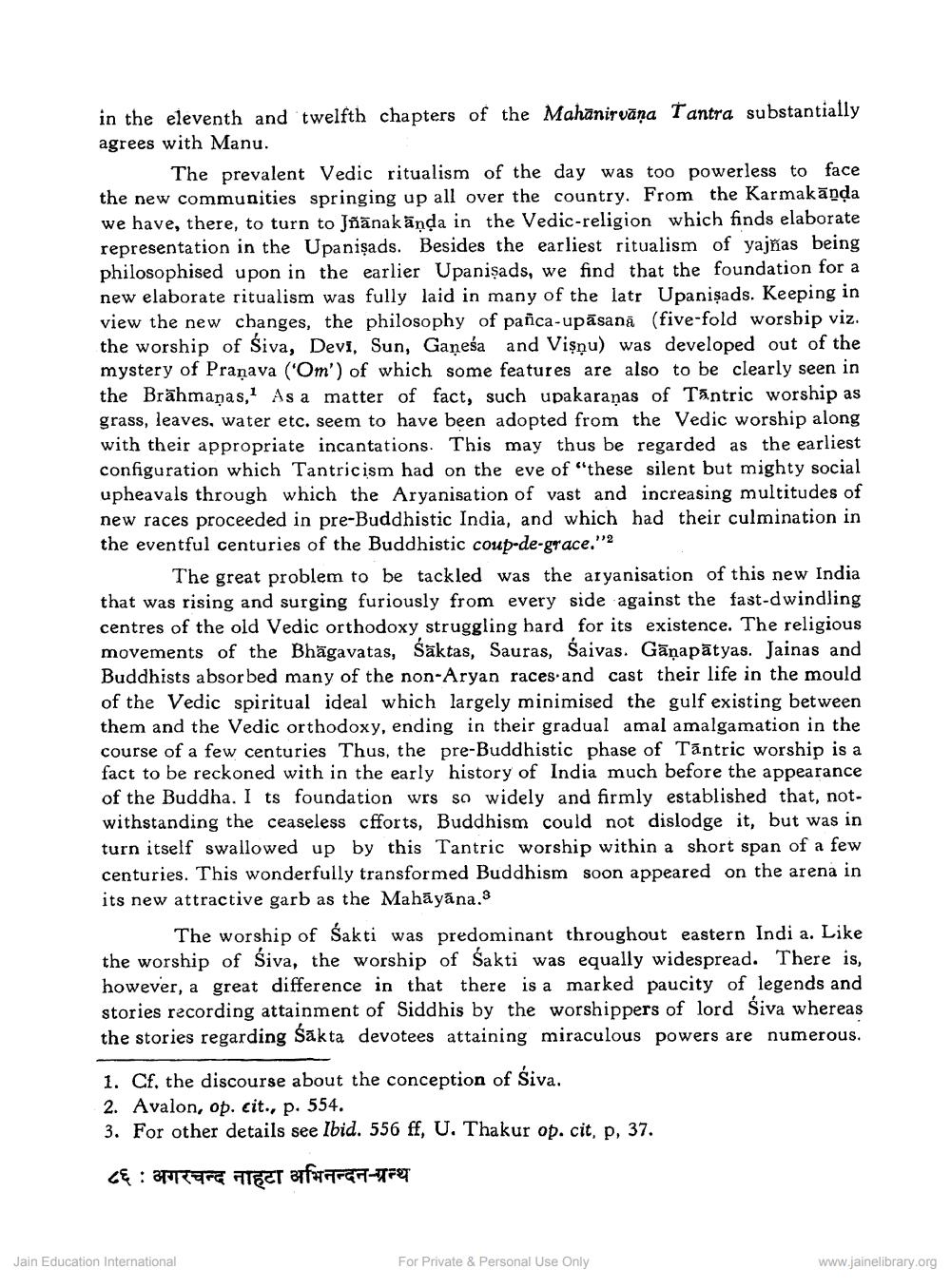________________
in the eleventh and twelfth chapters of the Mahānirvana Tantra substantially agrees with Manu.
The prevalent Vedic ritualism of the day was too powerless to face the new communities springing up all over the country. From the Karmakānda we have, there, to turn to Jñanakānda in the Vedic-religion which finds elaborate representation in the Upanişads. Besides the earliest ritualism of yajñas being philosophised upon in the earlier Upanişads, we find that the foundation for a new elaborate ritualism was fully laid in many of the latr Upanişads. Keeping in view the new changes, the philosophy of panica-upāsana (five-fold worship viz. the worship of Siva, Devi, Sun, Gaņeśa and Vişņu) was developed out of the mystery of Pranava ('Om') of which some features are also to be clearly seen in the Brāhmaṇas, As a matter of fact, such upakaraṇas of Tantric worship as grass, leaves, water etc. seem to have been adopted from the Vedic worship along with their appropriate incantations. This may thus be regarded as the earliest configuration which Tantricism had on the eve of "these silent but mighty social upheavals through which the Aryanisation of vast and increasing multitudes of new races proceeded in pre-Buddhistic India, and which had their culmination in the eventful centuries of the Buddhistic coup-de-grace.""
The great problem to be tackled was the aryanisation of this new India that was rising and surging furiously from every side against the fast-dwindling centres of the old Vedic orthodoxy struggling hard for its existence. The religious movements of the Bhagavatas, Säktas, Sauras, Saivas. Gänapätyas. Jainas and Buddhists absorbed many of the non-Aryan races and cast their life in the mould of the Vedic spiritual ideal which largely minimised the gulf existing between them and the Vedic orthodoxy, ending in their gradual amal amalgamation in the course of a few centuries Thus, the pre-Buddhistic phase of Tantric worship is a fact to be reckoned with in the early history of India much before the appearance of the Buddha. I ts foundation wrs so widely and firmly established that, notwithstanding the ceaseless cfforts, Buddhism could not dislodge it, but was in turn itself swallowed up by this Tantric worship within a short span of a few centuries. This wonderfully transformed Buddhism soon appeared on the arena in its new attractive garb as the Mahāyāna.
The worship of Śakti was predominant throughout eastern Indi a. Like the worship of Siva, the worship of Sakti was equally widespread. There is, however, a great difference in that there is a marked paucity of legends and stories recording attainment of Siddhis by the worshippers of lord Siva whereas the stories regarding Sākta devotees attaining miraculous powers are numerous. 1. Cf. the discourse about the conception of Siva. 2. Avalon, op. cit., p. 554. 3. For other details see Ibid. 556 ff, U. Thakur op. cit, p. 37.
८६ : अगरचन्द नाहटा अभिनन्दन-ग्रन्थ
Jain Education International
For Private & Personal Use Only
www.jainelibrary.org




